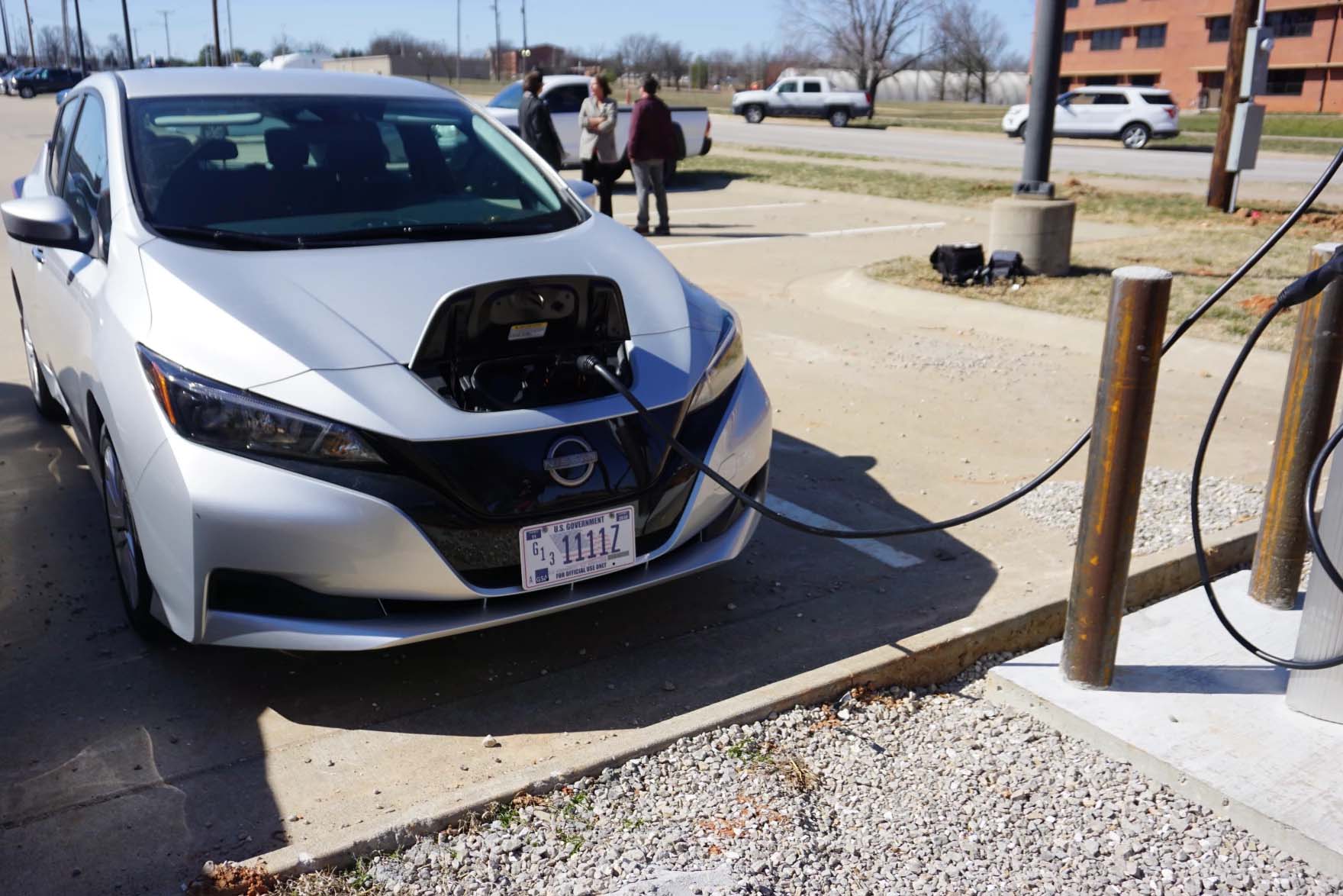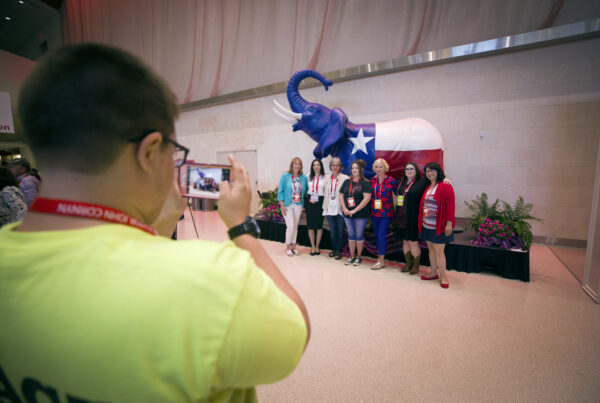From the American Homefront Project:
The Department of Defense has mandated all military branches to convert their fleets of non-combat vehicles from gas powered to electric by 2035.
That gives each installation across the country a little more than a decade to figure out the logistics of buying the vehicles and having enough places to charge them.
Fort Leonard Wood in Missouri’s Ozarks has found a way to try to make it work. It has transferred to the local electric utility the responsibility of building, maintaining, and updating the rapidly changing technology needed at charging stations.
There are more than 700 government owned non-tactical vehicles on post at Fort Leonard Wood, and work is underway to make all of them electric vehicles over the next dozen years. So far there are only seven, but 36 more are on the way.
“That’s just the number ordered so far. Right now, we’re even preparing to have more turnover and that number is going to exponentially grow as we move forward,” said William Wibberg, the Energy Manager at Fort Leonard Wood.
Buying the vehicles is one thing, but having enough places on the 100 square mile post to charge them is another. The charging requirements for vehicles are changing as technology advances.
Older EV’s used what are called Level 1 chargers, and newer cars and trucks use Level 2. Busses and heavy trucks will use Level 3. But the system could change, and the industry has not yet settled on a single format for charging.
Installing enough chargers cost effectively without sinking money into something that could be obsolete in a few years is a major challenge.
“With the number of charging stations we’re going to see on the installation, we’re working very close with our partners so that as these vehicles come onto the installation, they have a charger there to supply them with the energy that they need to keep running and support our mission here on Fort Leonard Wood,” Wibberg said.
Instead of trying to build, maintain, and update the chargers on its own, Fort Leonard Wood has contracted with Laclede Electric Cooperative to take on the task. Leclede is a small co-op that provides service in six Missouri counties.
The move shifts the responsibility of keeping up with the technology off of the military. That includes the chargers and the internet connectivity each unit will need to regulate security.
“Laclede will have to be responsible for the cyber part of it, and they’ll also maintain,” said Jeannie Belew, the Utility Manager at Fort Leonard Wood. “So we didn’t have to hire additional personnel in order to take care and maintain these charging stations.”
While Fort Leonard Wood sees building and maintaining EV chargers as a risk, Laclede Electric sees it as an opportunity. Laclede has been the utility transmission provider at the base for more than 20 years, and its business model and contract with the military makes it easier to absorb costs.
“We’re able to spread those recoveries out over a long period of time. Also knowing that every time we put a new pole in or whether it’s an electric vehicle charger that eventually someday is gonna need replacement,” said Terry Rosenthal, Manager of Engineering at Laclede.
Rosenthal also said the Fort Leonard Wood project will help the utility learn how to better serve non-military customers as electric vehicles become more common.
“I think we’re going to gain a lot of good, valuable experience with not only the charging infrastructure and the cloud portal that is supporting those charging processes, but also in the long term, learn what is the lifespan of these units,” he said.
The military’s embrace of electric vehicles could lead to faster conversion among civilians, according to Mehdi Ferdowsi, an Electrical and Computer Engineering professor at Missouri University of Science and Technology in Rolla. He said the work at Fort Leonard Wood could help answer a fundamental question about electric vehicles – who will own the charging stations?
“Let’s say you operate a parking lot. Are you as the owner of the parking lot going to own or install your charging station? Is it going to be the utility or is it going to be a lease agreement?,” Ferdowsi said. “The business model in this field has not been well developed.”
Ferdowsi is optimistic about the future of electric vehicles in the U.S., but also underscores there are a lot of unknowns and variables. But having large conversions of vehicles on military bases will provide more information as the industry moves forward, at least in some applications.
“Can (Fort Leonard Wood’s) experience be extrapolated to an outside business model? Yes and no,” Ferdowsi said. “For instance, what happens in the military could be used for a fleet operator. But for passenger vehicles it’s a little different, you might need a different set of data.”
For now, Laclede Electric is moving forward with building new charging stations on post. Currently there are only seven, but the co-op plans to install more, including at least seven more that will be run on solar power.
“The Fort is moving toward being environmentally and energy conscious,” Wibberg said. “We want to preserve a future for our soldiers, their families and Americans to come.”
This story was produced by the American Homefront Project, a public media collaboration that reports on American military life and veterans.














